A guide to customer journey mapping
Published on June 25, 2025/Last edited on November 10, 2025/13 min read
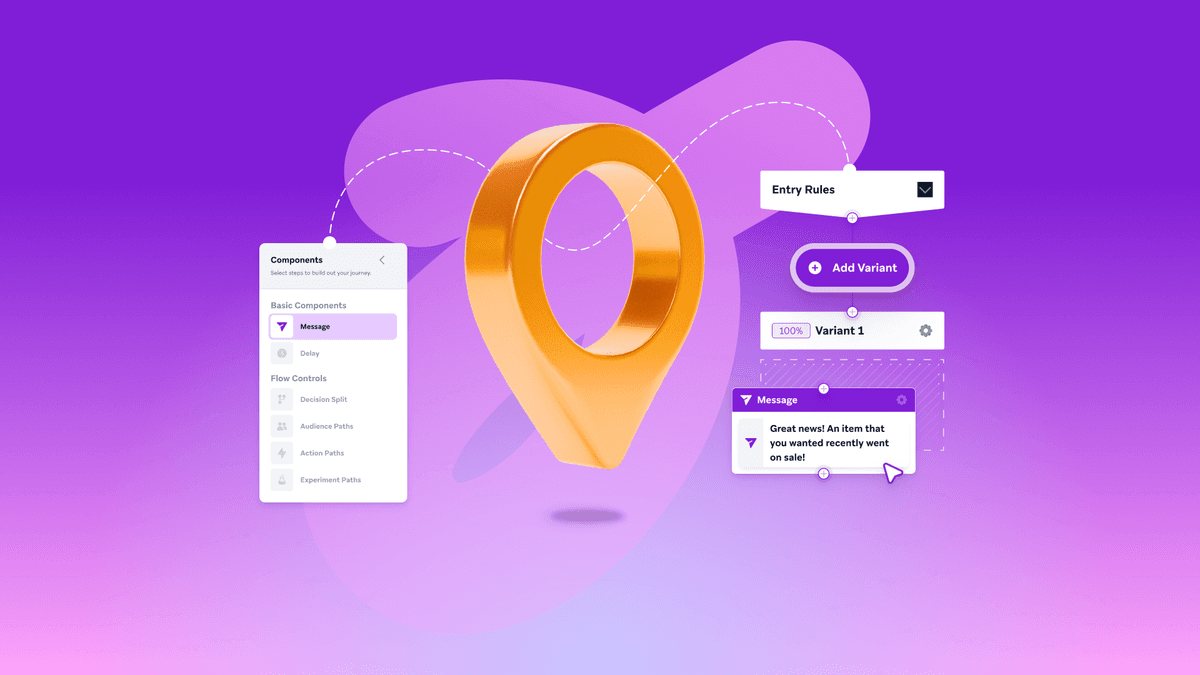
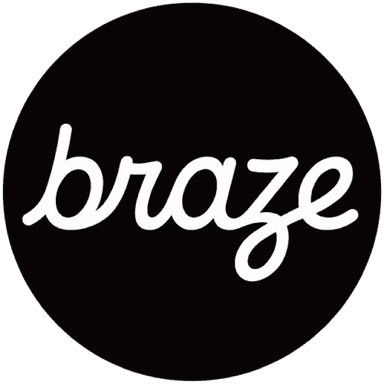
Team Braze
Consumers' experiences shape their perceptions and interactions with your brand as they navigate various touchpoints. This is where customer journey mapping comes into play—a strategic approach that visualizes the complete path a customer takes, from initial awareness to long-term loyalty. Creating a customer journey map helps improve the customer experience and the outcomes for your brand.
In this guide, we’ll break down what customer journey mapping is, how it compares to tools like funnels and lifecycle models, and how you can use it to personalize at scale, streamline engagement across channels, and drive measurable results.
Contents
- What is a customer journey map?
- Why customer experience journey mapping matters
- How does the customer journey map differ from the marketing funnel?
- The four stages of the customer journey
- Types of customer journey maps
- Customer journey mapping across different industries with real-life examples
- How to create a customer journey map using Braze tools and training
- Customer journey mapping FAQs
What is a customer journey map?
A customer journey map is a visual representation of how someone interacts with your brand over time. If you’ve ever wanted to orchestrate the path a customer takes, from the first click to the moments that make them stay (or leave), then a customer journey map is how you do it.
It lays out key touchpoints across the lifecycle, showing what customers are doing, thinking, and feeling as they move from awareness to action, loyalty, or churn.
Why customer experience journey mapping matters
Customer journey mapping helps you zoom out and design how different flows, channels, and moments connect from the customer’s perspective, giving you a blueprint to spot friction, align teams, and drive smarter decisions.
With a customer journey map in hand, you can:
Identify friction fast. From clunky onboarding flows to confusing pricing pages, journey maps can help show where things might break—so you can take action before customers drop off.
Create seamless, cross-channel experiences. Whether someone clicks an ad, opens your app, or contacts support, every interaction should feel connected. Mapping helps unify those touchpoints.
Build with real human context. Journey maps should capture the emotional and practical drivers behind behavior to help you orchestrate the right journey.
Unite teams around shared insight. Marketing, product, CX, CRM—everyone gets a clear view of what the customer is experiencing, and where to focus.
Personalize with purpose. Knowing where someone is in their journey helps you serve resonant messaging, fueling smarter segmentation and message timing.
How does the customer journey map differ from the marketing funnel?
It’s easy to confuse a customer journey map with the marketing funnel, as they both describe movement through stages. They serve different purposes but are both important to understanding your audience. The marketing funnel is built from the brand’s point of view. It’s linear, goal-driven, and focused on conversions—turning awareness into interest, interest into desire, and desire into action.
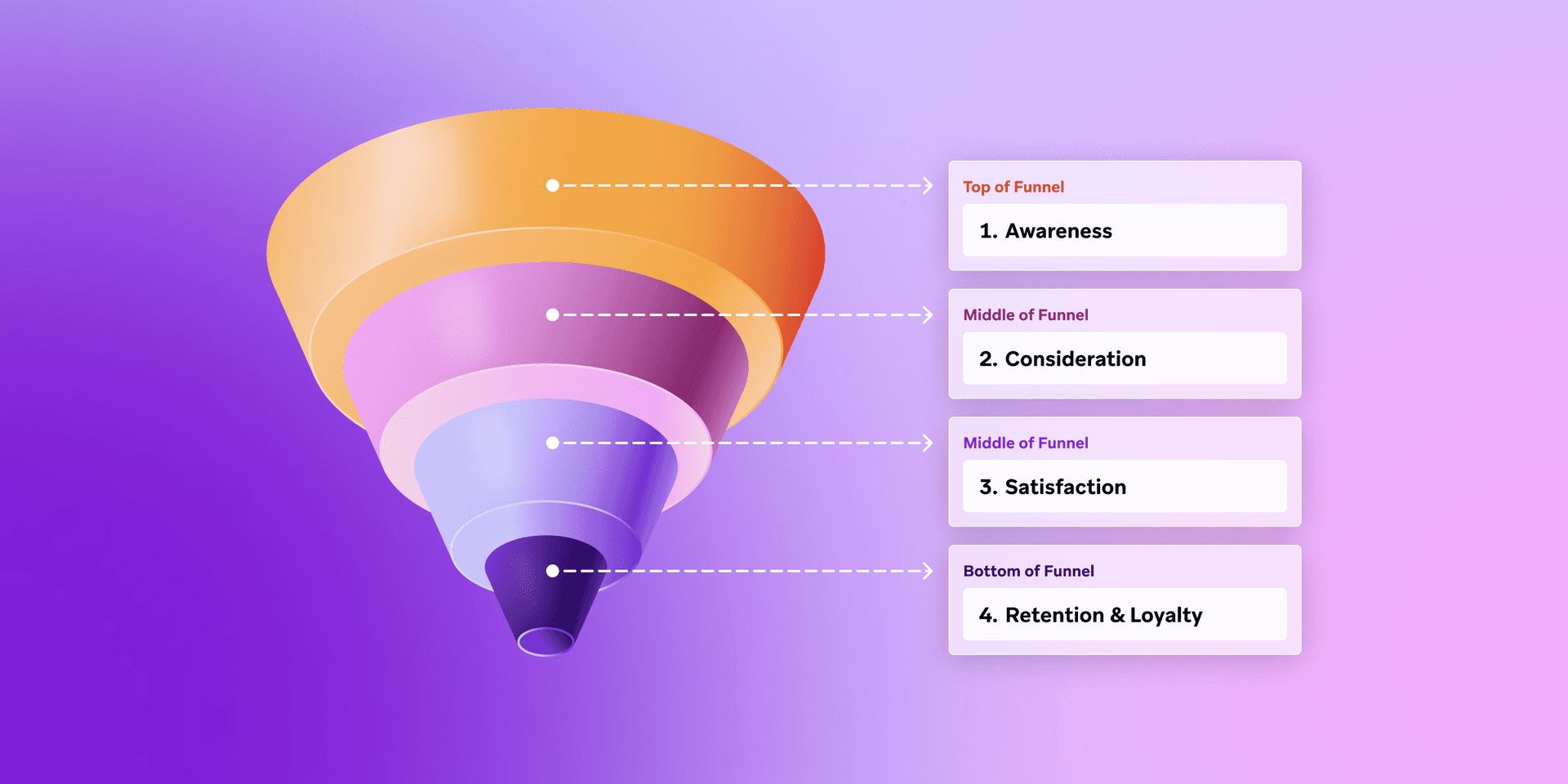
A customer journey map, on the other hand, starts with the customer’s experience and helps you uncover that “Aha” moment, where a customer is experiencing your core value proposition. It’s their point of view—what they do, what they feel, what they need, and where things get stuck—visually laid out in a map throughout the customer journey.
Customer journey mapping and lifecycle marketing work best together. While lifecycle marketing focuses on delivering the right message based on where someone is in their relationship with your brand, journey mapping reveals the full experience. By using both, brands can design smarter touchpoints, surface hidden friction, and make their lifecycle marketing feel more human.
The four stages of the customer journey
While every business defines customer stages a little differently, you can generally group them into four key lifecycle phases:
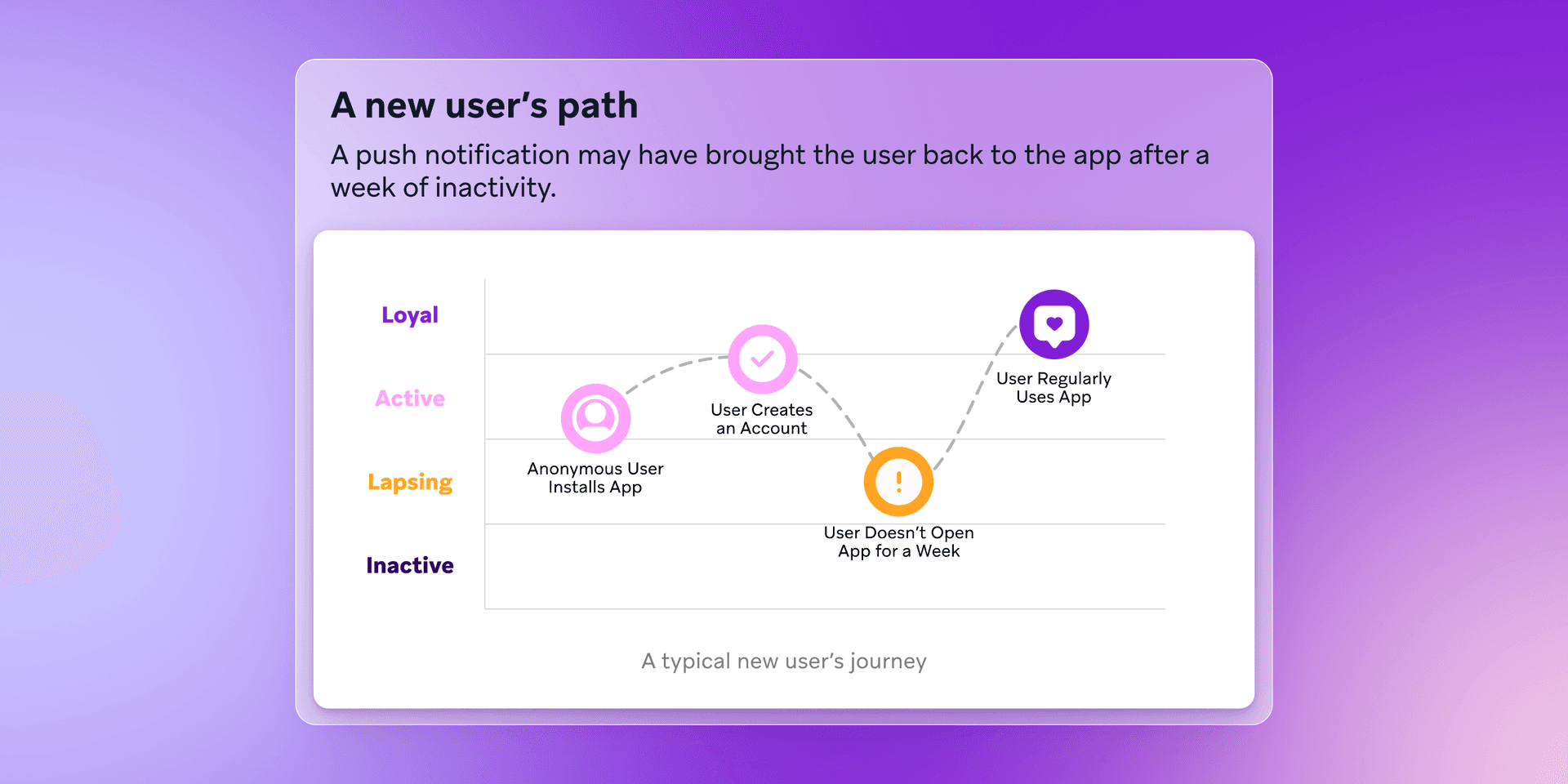
1. Loyal
These customers are consistently engaged and actively support your monetization goals—whether through repeat purchases, subscriptions, or advocacy.
2. Active
Customers who regularly interact with your brand across key touchpoints like your app, website, emails, or physical locations.
3. Lapsing
Their activity is declining. Maybe they’re skipping emails, using the app less, or visiting less often. This stage is a warning sign—but also a chance to re-engage before they drift away completely.
4. Inactive
These customers are no longer engaging with your brand at all. They've dropped off—but they’re not unreachable. With the right messaging and timing, some may still come back.
Types of customer journey maps
The right format for a customer journey map depends on your goals, your audience, and what you’re trying to uncover. But most maps fall into a few core types:
Touchpoint-based maps
These track the ways a customer interacts with your brand—across channels, teams, and moments. They’re useful for spotting gaps, repeated messaging, or inconsistent experiences. Often used in Retail, QSR, and Media, where engagement happens across multiple platforms in quick succession.
Goal-oriented maps
These follow a specific customer objective, like completing a purchase, booking a trip, or renewing a subscription. Common in Financial Services and Travel, where teams need to understand the steps and barriers along a defined path to conversion.
Day-in-the-life maps
This format zooms out to explore how your product or service fits into a customer’s broader, daily routine. Instead of focusing on a single goal or channel, it traces a full day (or week) in the customer’s life: what they’re doing, thinking, feeling, and juggling. This type of map helps teams understand context—when, and why someone might turn to your brand, or what’s competing for their attention. It’s especially useful in Healthcare and Wellness, where routines, emotional drivers, and habits play a big role in engagement.
Service blueprints
Service blueprints pair the customer’s journey with everything happening behind the scenes to support it. For each touchpoint, you also map the internal processes, teams, systems, and dependencies required to deliver that experience. This dual view helps spot operational breakdowns or areas where internal friction leads to poor customer outcomes. They’re often used in B2B where smooth coordination across departments and systems is essential to delivering consistent, high-quality experiences.
Customer journey mapping across different industries with real-life examples
Every industry has its own rhythms, touchpoints, and friction points. But customer journey mapping works across the board—whether you’re selling streaming subscriptions, onboarding students, or delivering healthcare reminders. Here’s how different sectors use journey maps to create better, smarter experiences:
Media and Entertainment
Media brands use journey mapping to track how audiences find, engage with, and return to content across platforms. It helps uncover where viewers stall—whether at paywalls, app logins, or underperforming recommendations—and where to introduce nudges that drive continued consumption and loyalty.
Blinkist delivers personalized content at key moments to increase subscriptions
Use case: Blinkist, a subscription-based app that distills nonfiction books into bite-sized audio and text, needed a better way to showcase the value of its premium tier to users across different regions. Understanding where users were in their journey, from initial exploration to deeper engagement, was key.
Using Braze, the team mapped behavioral patterns across free users and applied targeted segmentation to deliver personalized messaging at key moments. This customer-centric approach helped surface relevant content based on usage and interest, nudging users toward conversion. Blinkist saw a 64% increase in premium subscription purchases.
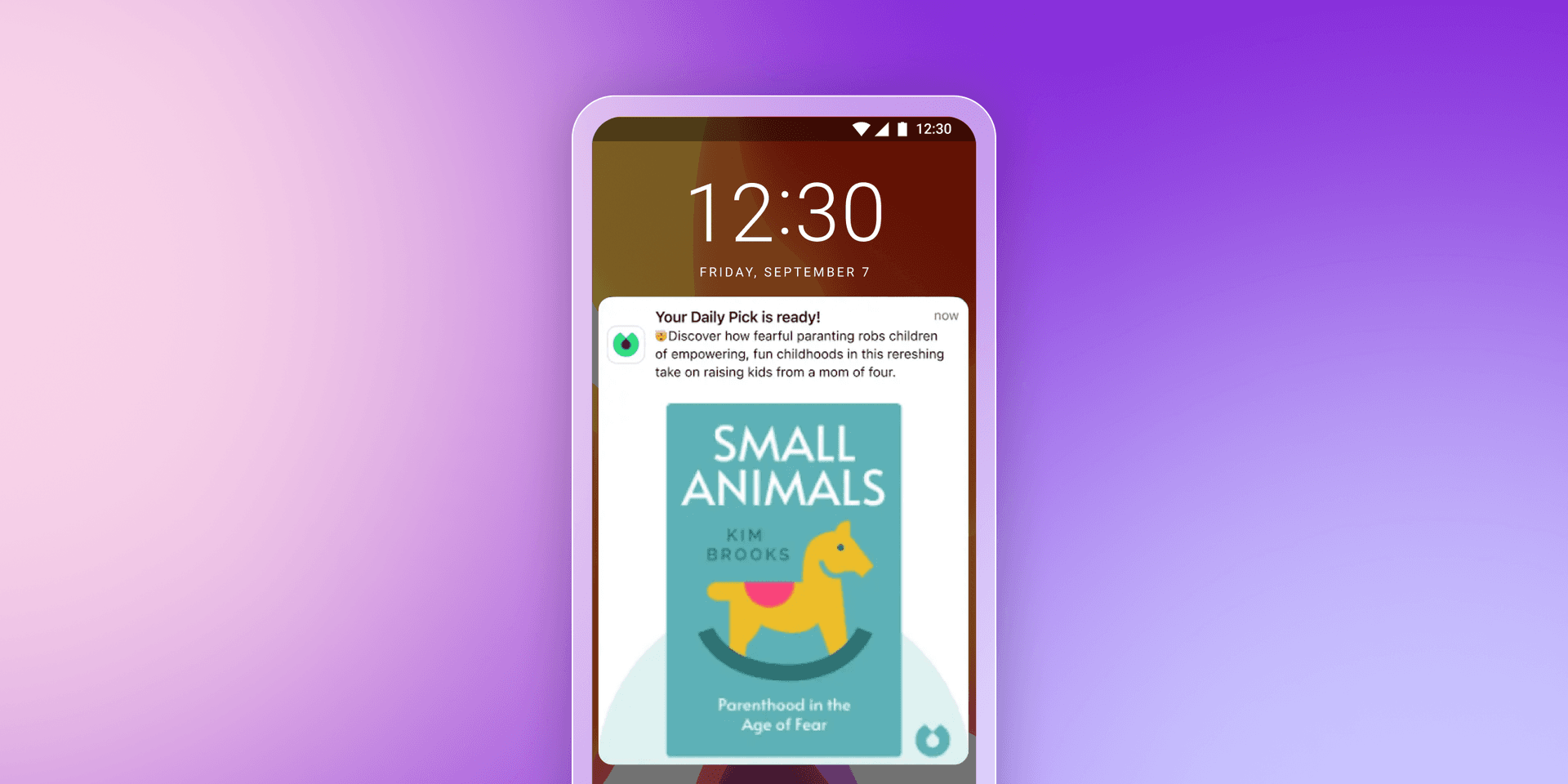
Ticketek serves up more relevant event suggestions to drive sales
Use case: Ticketek, one of Australia’s leading ticketing platforms, used journey mapping insights to better understand where customers were in their decision-making process and how preferences shaped behavior over time. With Braze and Connected Content, they dynamically personalized their weekly newsletter using customer data from their warehouse and machine learning to serve up more relevant event suggestions.
By aligning message content with customer context, Ticketek increased their click-to-convert rate by 228% and saw a 49% uplift in sales from opened emails.
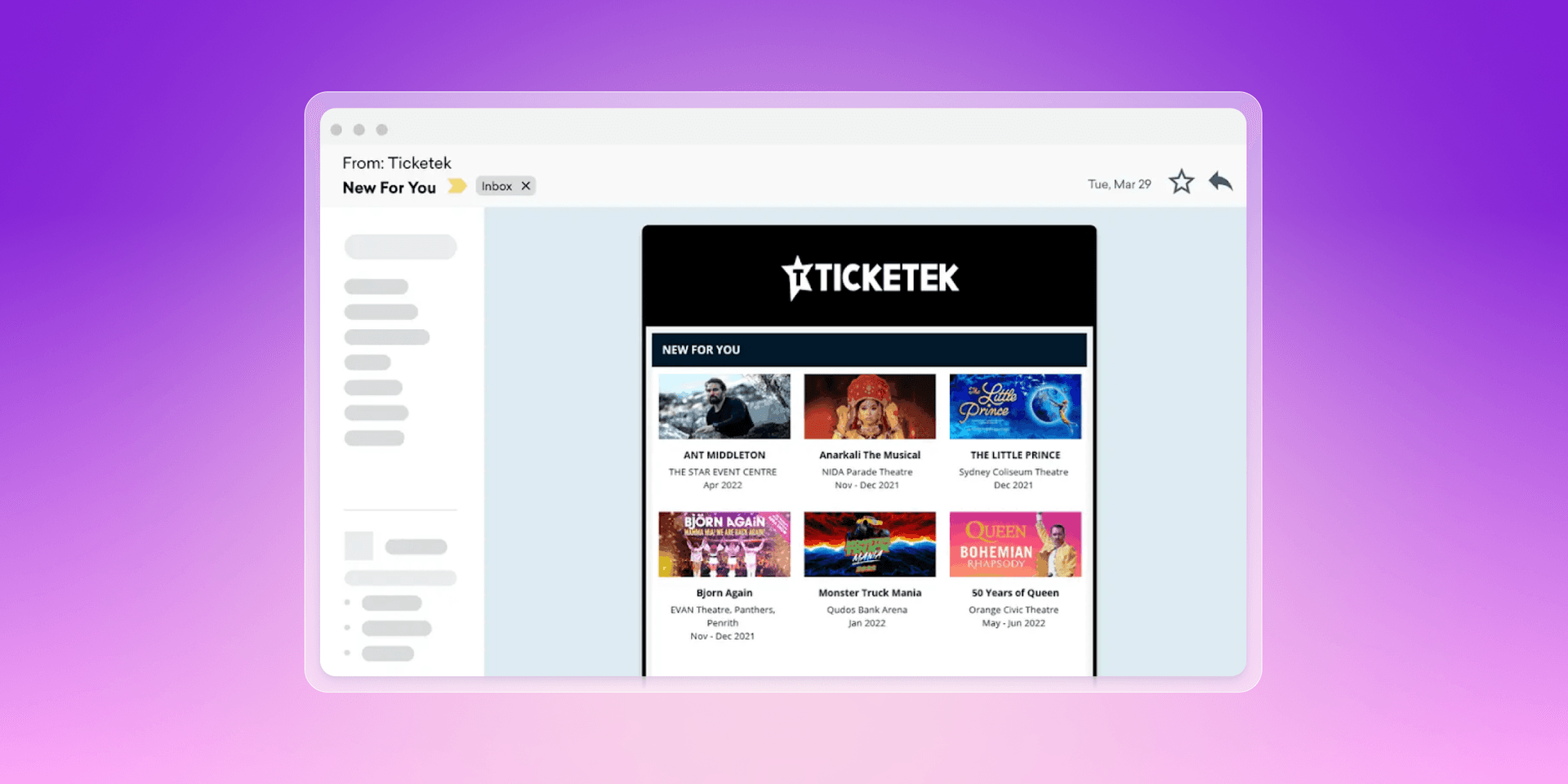
Travel and hospitality
From dreaming and booking to check-in and follow-up, travel journeys span long timelines and high expectations. Journey mapping helps identify where delays, lack of support, or disconnected messaging create stress, and where personalization or real-time updates can improve satisfaction.
TUI goes the distance with lifecycle-led mobile engagement
TUI is a global travel and leisure leader that helps customers turn holiday dreams into real-world experiences, like a Caribbean cruise, a trip to see the Northern Lights, or a skiing vacay. With a wide audience and growing demand for personalization, TUI needed a smarter way to stay connected across the entire travel journey.
The problem
Facing rising acquisition costs and the change in third-party cookies, TUI saw an opportunity to deepen customer engagement by shifting focus to app usage and cross-channel communication. The aim was to build an in-app experience that could support travelers at every lifecycle stage without losing the personal touch that defines great service.
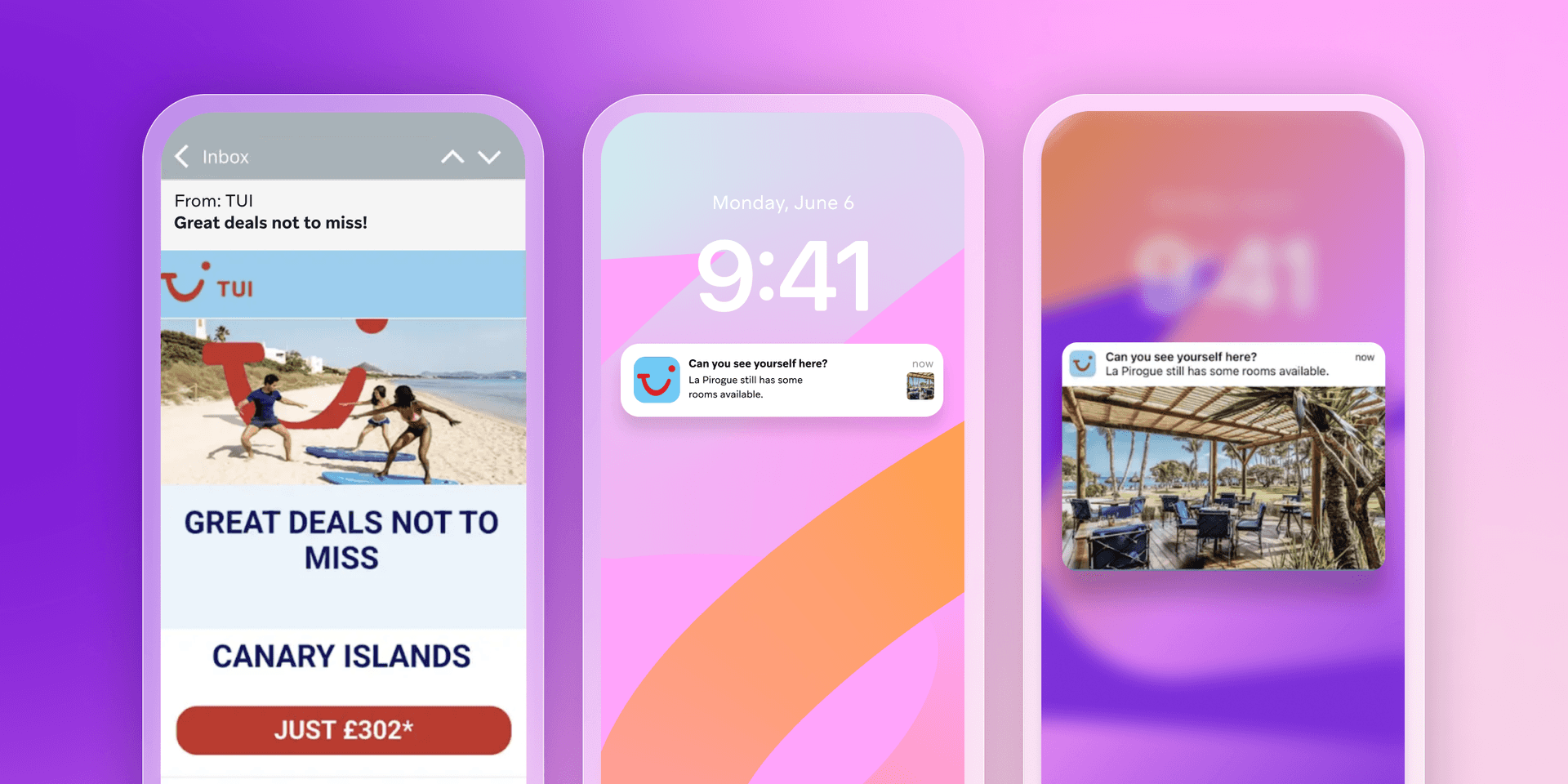
The strategy
TUI began by mapping five key phases of the customer journey: onboarding, inspire & book, pre-departure, travel & trip, and relive & retain. With Braze, they orchestrated personalized messaging across email, SMS, in-app, push, and web, using real-time triggers like location, behavioral data, and geofencing to keep each message timely and relevant.
The app transformed into a dynamic travel companion—from guiding meal upgrades pre-departure to offering excursion suggestions mid-trip. TUI also replaced siloed one-off campaigns with an “always-on” approach powered by 40 automated messages and 15 new app features, all designed to create consistency and drive conversions across touchpoints.
The results
With a unified, journey-based strategy, TUI achieved a 118% increase in app bookings, a 78% lift in holiday purchases made through the app, and a 205% jump in ancillary product sales like airport parking and insurance. Mobile now accounts for 23% of their CRM volume—up from 0%.
Financial services
Banks and fintech companies map journeys to reduce friction during complex processes like account setup, loan applications, or investment onboarding. These maps help identify drop-offs, flag confusing experiences, and highlight moments where trust and clarity are critical.
Endowus invests in onboarding to transform the wealth journey
Endowus is a Singapore-based digital wealth platform on a mission to make investing more accessible. By offering expert advice and access to institutional-grade funds with no sales commissions, they aim to simplify financial planning and empower users to invest their public pension (CPF) funds with confidence.
The problem
Investing used to be an offline, complicated process for many Singaporeans, especially when trying to use CPF funds. Endowus wanted to change that by building a seamless, tech-forward onboarding experience that could be completed in minutes. As the company expanded from web to mobile, they needed a solution to manage customer messaging and support the app’s role in driving long-term engagement.

The strategy
Using Braze Canvas, Endowus mapped and automated cross-channel customer journeys to meet users at key moments—from onboarding through investment. They used action-based triggers (e.g., when a customer moved from submitting onboarding details to opening a broker account) and time-based messaging (e.g., sending an NPS survey a week after the first investment). Segmentation based on referral source, event attendance, and investment behavior made each journey more personalized and relevant.
To maintain a thoughtful experience, they also applied frequency capping—ensuring users weren’t overwhelmed by promotional content, even as the team scaled up messaging across webinars, insights, and product updates.
The results
With journey mapping at the core of their messaging strategy, Endowus saw a 30% increase in email open rates. They also significantly reduced the time it took to execute campaigns, freeing up their lean team to experiment, optimize, and build better customer experiences.
Health and Wellness
In this space, journey maps help teams deliver care that feels proactive, respectful, and human. Whether supporting chronic condition management or onboarding new app users, mapping reveals where patients get lost or overwhelmed, and how to design for trust, clarity, and long-term engagement.
QSR (Quick Service Restaurants)
QSR brands use journey maps to streamline high-frequency, high-speed interactions, whether it’s ordering via app, drive-thru, or kiosk. Mapping helps identify slowdowns, missing menu info, or gaps between digital orders and physical pickup, so teams can tune both UX and operations.
Brewing loyalty: Dutch Bros crafts a journey-first digital experience
Dutch Bros is a fast-growing QSR brand known for its handcrafted drinks and upbeat, community-driven customer experience. With 800+ locations across the U.S., the brand considers itself in the “relationship business”—focused on delivering standout interactions both in-person and digitally.
The problem
As Dutch Bros expanded its digital presence, it needed its app to feel as personal and dynamic as the conversations customers have with their “broistas” (baristas). But fragmented messaging channels and siloed systems made it hard to deliver a cohesive, personalized experience. Their tech stack was bloated, messaging was inconsistent, and engagement opportunities were being missed.
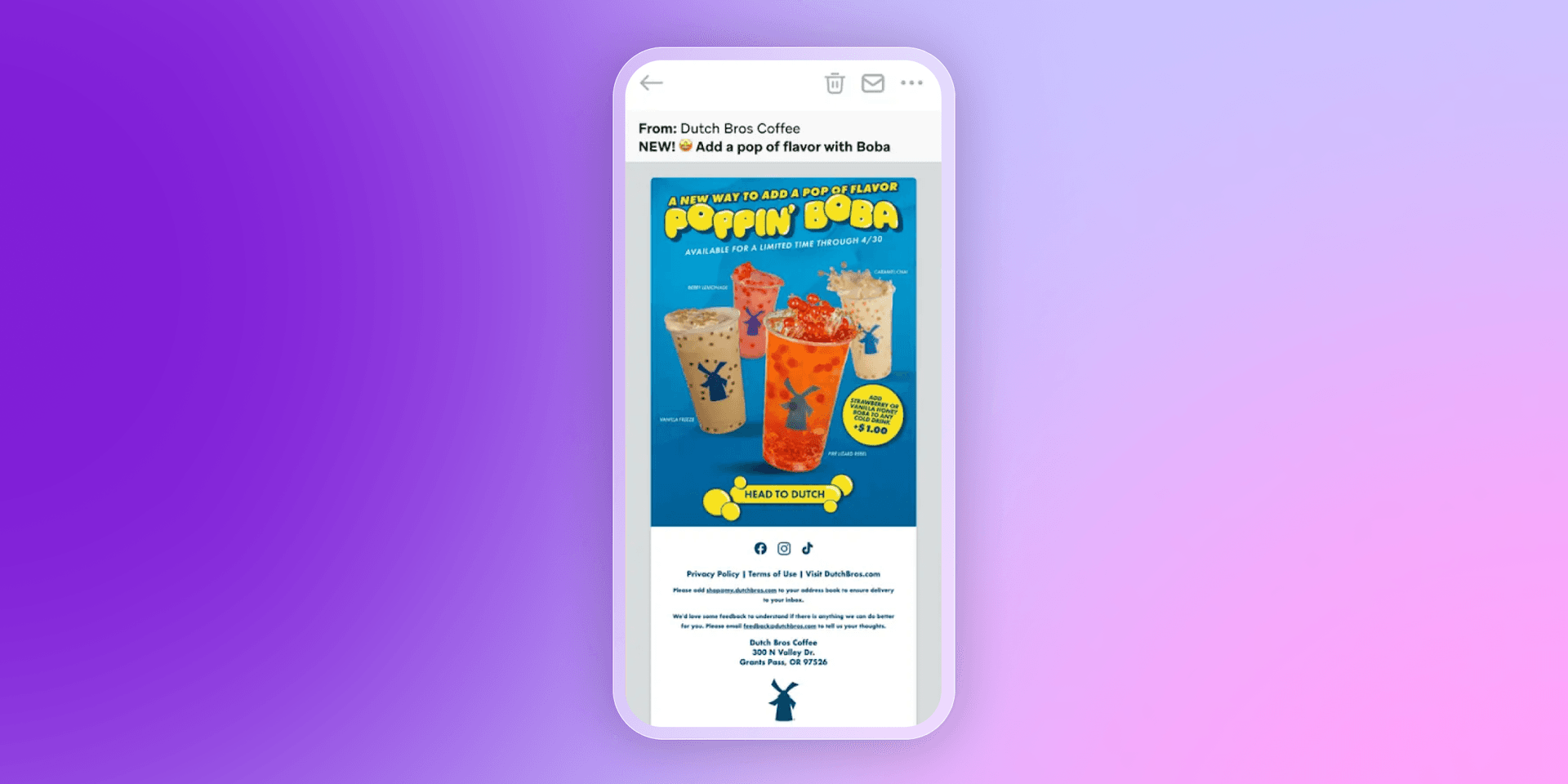
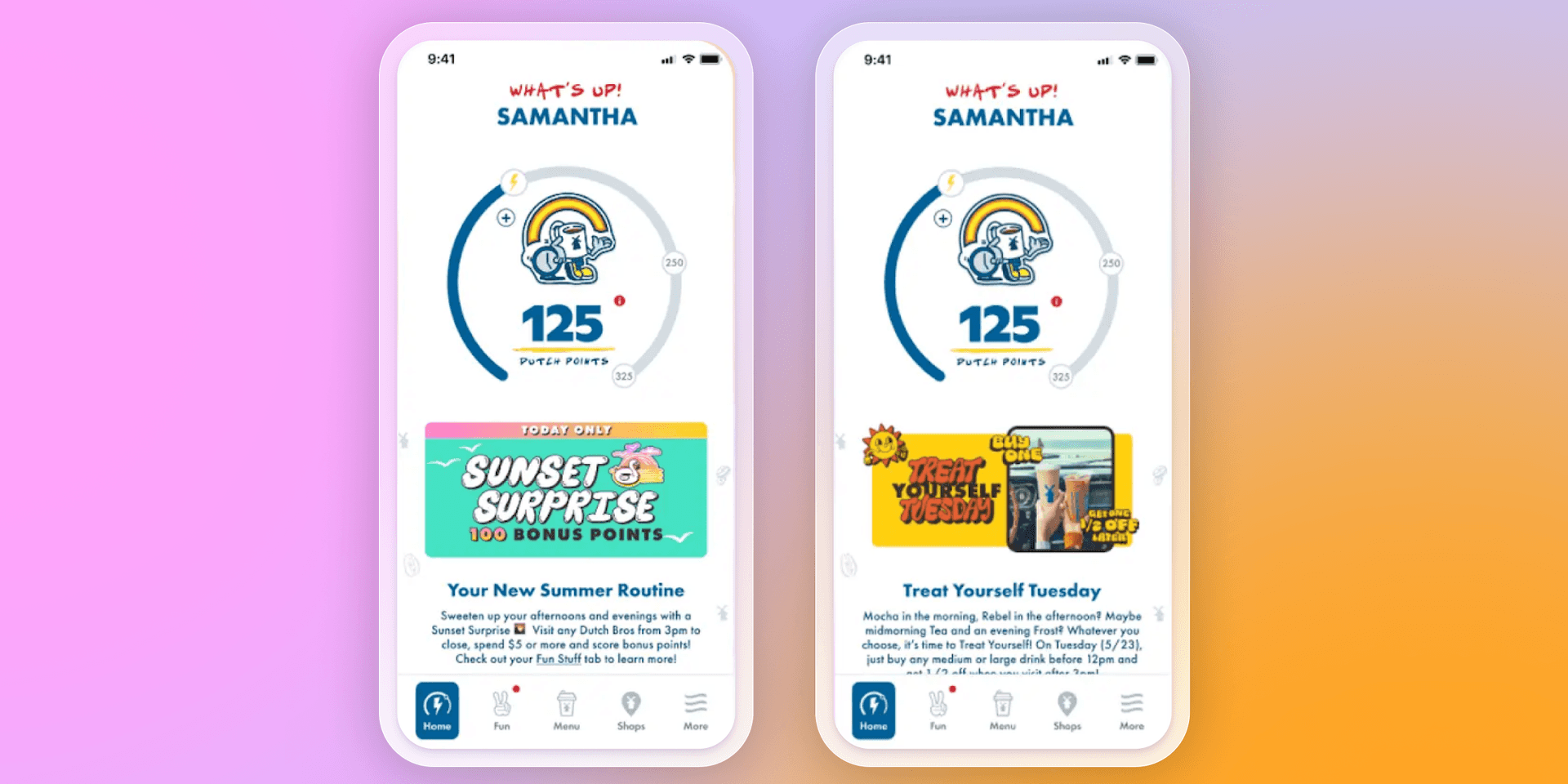
The strategy
With Braze, Dutch Bros took a journey-first approach to rebuilding its messaging strategy. The team mapped key lifecycle moments—like app usage, tipping, purchase behavior, and stored value interactions—and built cross-channel experiences using Braze Canvas. By leveraging real-time data and integrations with Segment and Braze Catalogs, Dutch Bros sent product-based messages tailored to each user’s preferences, favorite location, and purchase history.
Using Braze Content Cards, push, in-app, and SMS, Dutch Bros engaged customers with relevant offers, like iced drinks for fans of cold brews or blended items for those who previously purchased smoothies. Braze’s intuitive orchestration tools also gave them the flexibility to iterate quickly and keep teams aligned around shared goals.
The results
Dutch Bros consolidated all owned channels within Braze, simplifying campaign management and improving agility. With journey mapping at the core of their engagement strategy, the brand delivered smarter, more contextual messages at scale, boosting app engagement, increasing revenue, and making their customer connections feel more real and relevant.
How to create a customer journey map using Braze tools and training
A great customer journey map helps you act on what matters. With Braze, you can move from static diagrams to responsive journeys built on real behavior and real-time data.
Here’s how to get started:
1. Define your journey phases
Begin by mapping out the foundational lifecycle stages: acquisition, activation, engagement, and monetization. From there, layer in behavioral moments like the Setup Moment (onboarding), the Aha! Moment (when the user first experiences value), and Habit Generation (when repeat behavior sets in). These moments shape the journey and guide what to track.
2. Segment your audience by behavior
Use Braze to segment customers into groups like Power Users, Core Users, Casual Users, Dormant, and Churned. This lets you tailor journeys for different engagement levels—whether you're nurturing loyal users or reactivating those at risk of churn.
3. Bring in your data
Unify your data with the Braze Data Platform to collect, analyze, and sync data and insights from across your digital ecosystem. This builds the foundation for personalized, event-triggered messaging at scale.
4. Build responsive journeys in Braze Canvas
Design customer journeys using Braze Canvas, our drag-and-drop orchestration tool. Set up action and time-based triggers, map key messaging moments to each stage, and coordinate channels—email, push, in-app, SMS, and more—around what the customer is doing, not just who they are.
5. Personalize every message
Use Connected Content and Liquid personalization to dynamically adjust messaging based on behavior, preferences, and location. Whether you're recommending a next step or celebrating a milestone, messages should feel relevant, not generic.
6. Test, track, and optimize
Use Action Paths to visualize drop-offs or high-performing routes, and Reporting & Analytics to measure what’s working. Experiment with variations inside Canvas to refine message timing, content, and sequencing—all in real time.
Customer journey mapping FAQs
A customer journey map is creating a visual representation of how a customer interacts with your brand over time and/or throughout the lifecycle. It helps teams understand behavior, emotions, and touchpoints from the first interaction through to long-term loyalty.
Customer journey mapping helps teams improve the customer experience by identifying friction points, optimizing messaging, and personalizing outreach across channels. It’s a powerful tool for boosting engagement, retention, and satisfaction.
To create a customer journey map, start by gathering data on customer behavior. Then define key lifecycle stages, identify major touchpoints, and document user needs, emotions, and actions at each step. Use these insights to improve your campaigns and communication flows.
While every journey is different, there are four key lifecycle stages: Loyal (highly engaged, monetized users), Active (frequent users), Lapsing (declining engagement), and Inactive (users who’ve stopped engaging).
Customer journey mapping tools include visual diagramming platforms, data analytics tools, and customer engagement platforms like Braze. With Braze Canvas, you can orchestrate journeys, test messages and flows, and adapt journeys based on live behavior and preferences.
Related Tags
Be Absolutely Engaging.™
Sign up for regular updates from Braze.
Related Content
View the Blog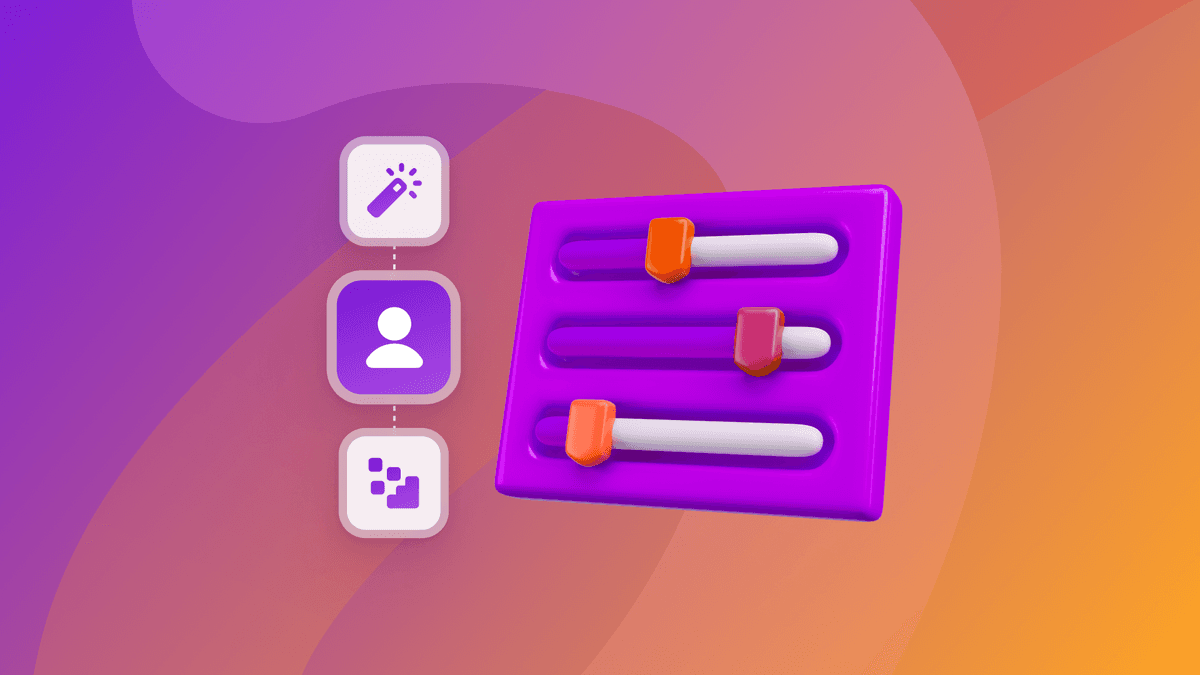
How behavioral marketing turns data into personalized experiences

Team Braze
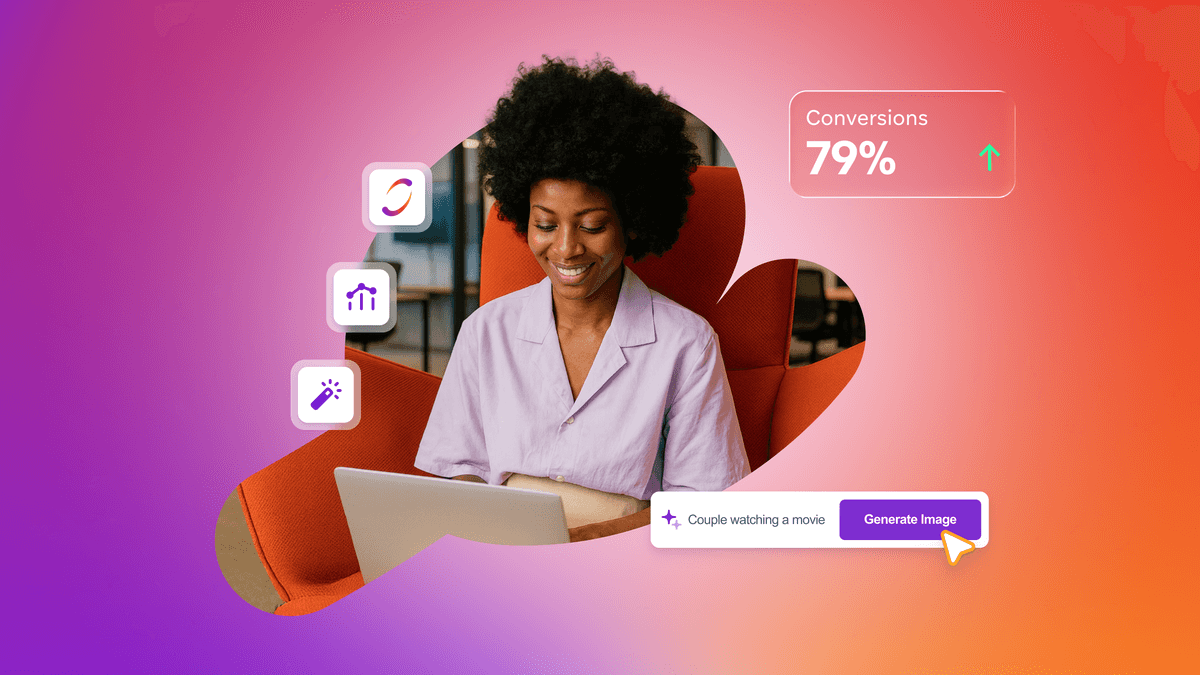
Are you AI-savvy enough to survive? A wake-up call for CMOs

Team Braze
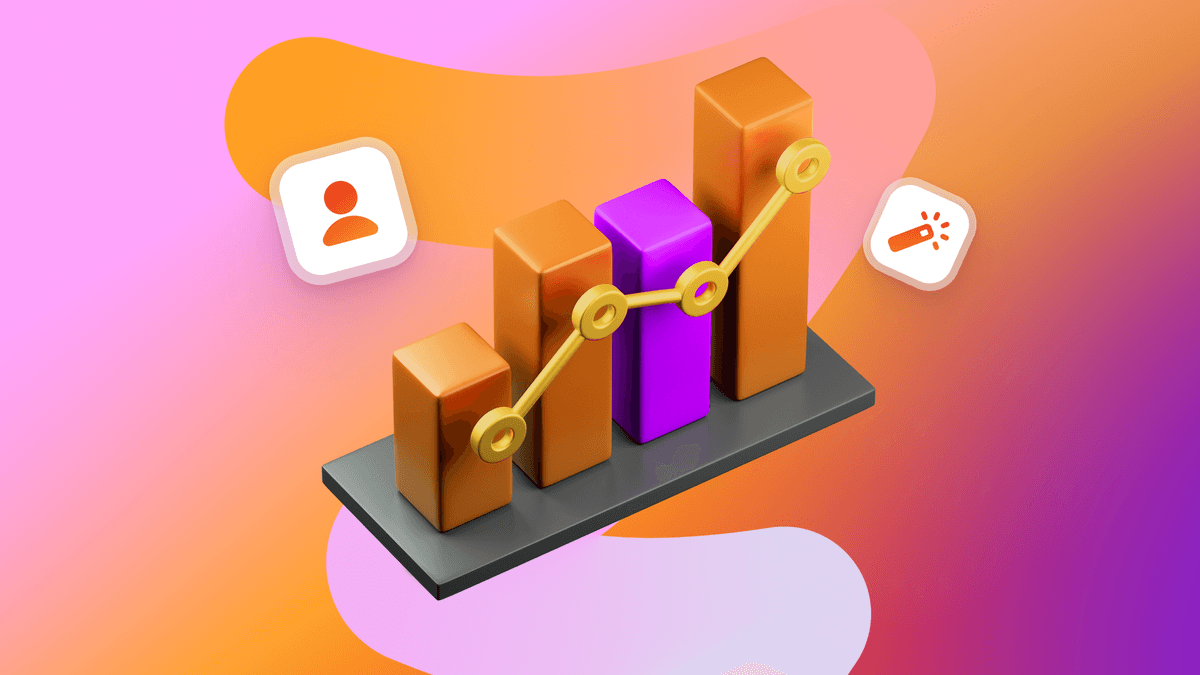
What are contextual bandits? The AI behind smarter, real-time personalization
